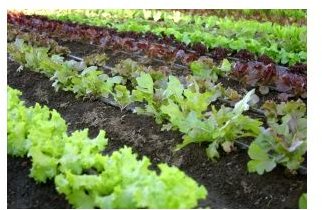Designing a Sustainable Vegetable Garden the Easy Way: Tips & Tricks
Is your vegetable garden helping or hurting the environment? Sustainable gardening practices can help the environment by working in tandem with nature. If you’re interested in designing a sustainable vegetable garden, you’ll find tips and tricks in this article, as well as an easy-to-understand discussion of just what sustainable gardening means.
Image credit: ©AlexaSky, https://sxc.hu.
Just What is a Sustainable Vegetable Garden?
Sustainable gardening shares a lot with the concept of organic gardening, and in fact the two terms can generally be used interchangeably. However, sustainable gardening is a somewhat more encompassing concept than organic gardening, interested not only in the use of non-damaging chemicals and materials, but also in broader environmental concepts such as:
Water
- managing water availability
- maintaining water quality outside the garden
Energy
- limiting energy use on the vegetable garden
Waste
Soil
- preventing soil degradation
- amending soil through natural methods
As you can see, designing a sustainable vegetable garden involves thinking about the world around you. You will find yourself asking questions such as, “Should I really be watering the whole garden, or is there a way I can focus on individual vegetable plants?” and “Can I design my vegetable garden with an area for composting garden waste?”
In a nutshell, when designing a sustainable vegetable garden, you take the garden’s impact on the surrounding ecosystem into account and work to have an overall positive impact.
Tips for Designing A Sustainable Vegetable Garden
Think about the climate in your area and try to grow vegetables suited for it. If your area is dry, try drought-resistant varieties to reduce the need to water and its attendant impact on the water table.
Got bugs? Try integrated pest management (IPM). Using IPM will drastically reduce the need to spray or use harsh chemicals in your garden, which encourages sustainability by reducing chemical runoff that poisons ground water. Companion planting, which involves placing plants that attract beneficial insects near one another, is one easy IPM method. For example, dill attracts braconid wasps, which control tomato hornworms.
Any vegetable garden can be sustainable, whether it’s designed in classic rows or more modern raised beds. In addition to planning for water usage, choosing appropriate vegetables, practicing integrated pest management, and caring for the soil is key. Mulch, whether grass, hay, wood chips, paper, or compost, not only insulates the soil and provides a non-muddy walking surface, but it breaks down and feeds the soil over time. When designing a sustainable vegetable garden, also be sure to make room for a compost bin or pile.
By considering these topics — water usage, plant choice, IPM, and soil care — when designing a sustainable vegetable garden, you’re not only doing a good deed for the world around you, you’re also ensuring yourself a healthy, vibrant garden. You’ll be surprised at how wonderfully productive your vegetable plants will be when they’re getting lots of organic matter and beneficial insects feel welcome to enter the garden to chomp on pests. Give these easy tips a try!
This post is part of the series: Learn the Basics of Sustainable Gardening
Learn the basics of sustainable gardening in this two-part series. In part one, you’ll be introduced to the concept of “sustainable gardening,” and discover what concepts it encompasses. In part two, you’ll learn about designing a sustainable vegetable garden: what it means, and tips and tricks.
